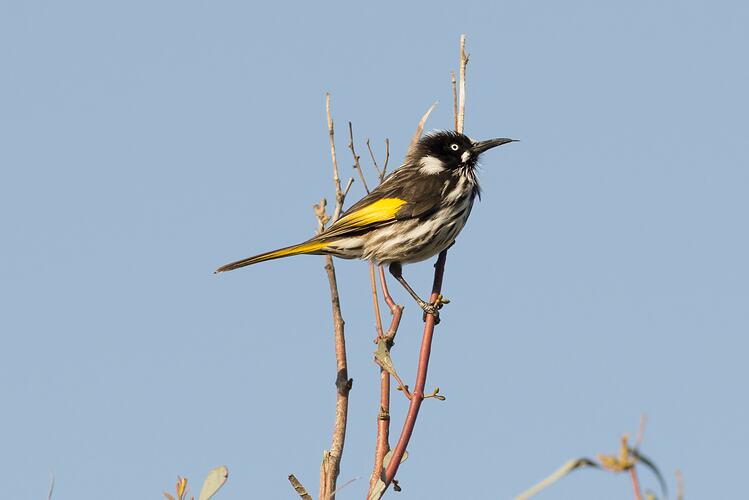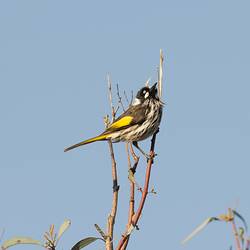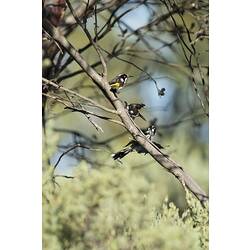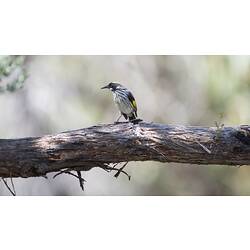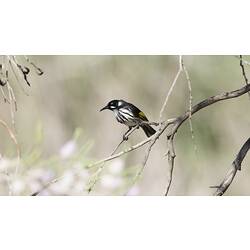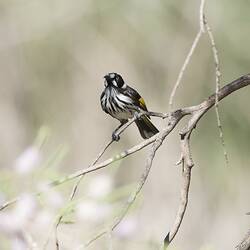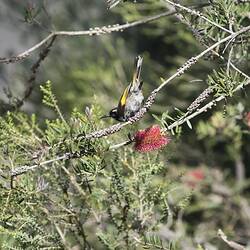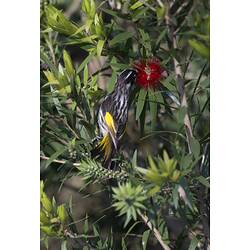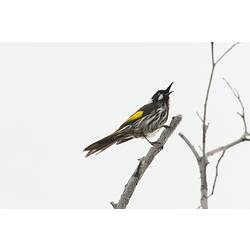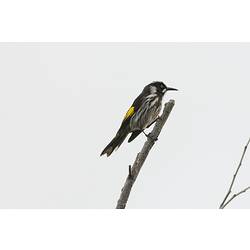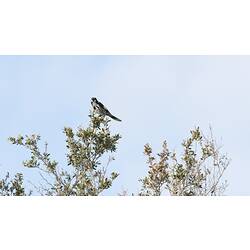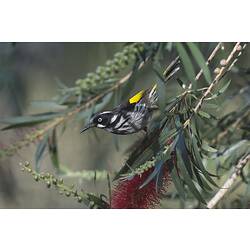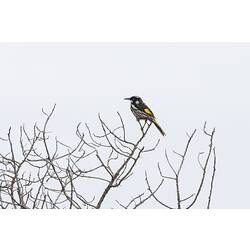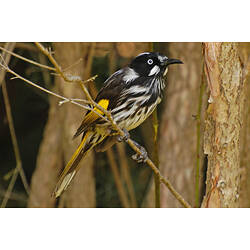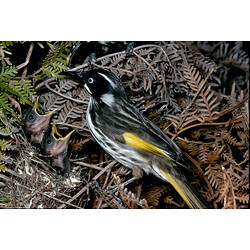General Description
Body black and white except for a bright yellow patch on the wing. Underparts white with numerous black streaks and fine white streaks on the throat. White stripe above the eye, patch below the eye and behind the ear. Eye white. Yellow sides on the tail. Juveniles browner than adults with grey eyes. Bill to tail length is up to 20 cm.
Biology
New Holland Honeyeaters dart from flower to flower feeding on nectar, fruit, insects and honeydew. Their long, slender beaks and protruding tongue enable them to extract nectar found in long flowers such as Banksias and Grevilleas. They normally feed in large groups and can mix with other species of honeyeaters. Spider webs are used to construct a cup-shaped nest built from grasses, twigs and bark, lined with soft material. Nests are built in forks of low trees or bushes no more than 6 m from the ground. The usual clutch size is two to three eggs, and a breeding pair can raise up to three broods each year. Both sexes feed the young. New Holland Honeyeaters are extremely active and inquisitive, rarely staying still for more than a couple of minutes.
Distribution
South-western and south-eastern mainland Australia and Tasmania.
Habitat
Heaths, forests, coastal banksia woodlands and urban areas.
More Information
-
Animal Type
-
Animal SubType
-
Brief Id
Black and white honeyeater with a large yellow wing patch and a white iris, eyebrow and patch below the eye.
-
Colours
Black, Yellow
-
Maximum Size
20 cm
-
Habitats
-
Diet
Omnivore
-
Diet Categories
Nectar, Invertebrates
-
Endemicity
-
Commercial
No
-
Conservation Statuses
CITES: Not listed, FFG Threatened List: Not listed, EPBC Act 1999: Not listed, IUCN Red List: Least Concern
-
Taxon Name
-
Common Name
New Holland Honeyeater
-
Kingdom
-
Phylum
-
Subphylum
-
Class
-
Order
-
Family
-
Genus
-
Species Name
novaehollandiae
